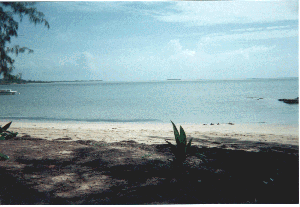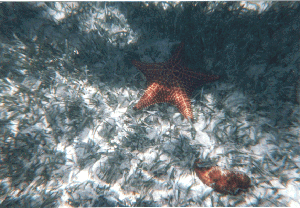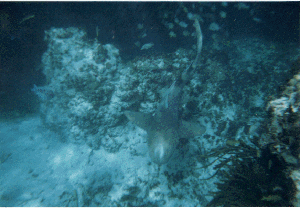The Tropical Flora of the Bahamas Course
Offered by Miami University
During the summer between my junior and senior years at Miami University, I took the Tropical Flora of the Bahamas course on North Andros Island in the Bahamas. This course was relatively inexpensive, and it was one of the best courses that I have ever taken. I would recommend it to anyone who attends Miami and has an interest in the field of biological science.
When we arrived at North Andros Island, we were driven by taxi to Forfar Field Station. I then went to my room along with my five roommates, and this is what I saw.

Our room consisted of six beds (bunked two together), shelves, and a bathroom. The bathroom, by the way, did not have heated water, and we were supposed to refrain from flushing the toilet as much as possible. Although cold-water showers sounded pretty intimidating at the time, they were soon quite bearable.
Our floors were constantly dirty, and we were instructed to keep all of our belongings in our luggage bags. This was due to the fact that mice, rats, spiders, and insects were very commonly roaming through our rooms. In fact, on the first day, two of the women in the class found a four foot long pygmy boa snake in their room.
The view looking out of my front door was quite attractive. In the foreground is a young coconut tree.

During a typical day, we would wake up and eat breakfast at 9:00. Then
we would travel by van to an ecological site, where we would spend a
large part of the day. Sometimes, we would learn plants native to the
region. Other times, we would investigate different ecosystems. We also
had the opportunity to snorkle sometimes during the day. We would
typically return to Forfar at 4:00, and we then had time to relax until
dinner at 6:00. After dinner, we would meet in the classroom for about
an hour, and after that we could study or spend time with other members
of the class. Although we had a lot of work to do, we also had time to
socialize.
These are two beach environments that we visited while traveling from one
site to another.


One of the distinct regions on North Andros Island was the pineland
ecosystem. This pineland is approximately 40 to 50 years old, and it has
not experienced a fire in approximately 10 to 15 years. One of my
favorite assignments on the trip was doing ecological transects through
pinelands such as this one.

In the desert-like scrub regions, I experienced one of my favorite
plants, the agave plant.

Also in the scrubland were some cacti. This cactus has a fruit still
attached.

The remainder of these photos were taken underwater. I must give credit to Jeremy Moynihan, who took a couple of these pictures for me.

Starfish

Tropical fish and coral

At a coral reef

A school of fish and aquatic plant life

A baracuda in the distance (just at the surface of the water)

Stingray

Seven-foot Nurse Shark

The same shark
Like I said, my two week trip to the Bahamas was not all fun in the sun, but I would not pass up the opportunity to go there again. Hopefully these photos help to show the main points of the trip.
| Return to my homepage | Class Participants |